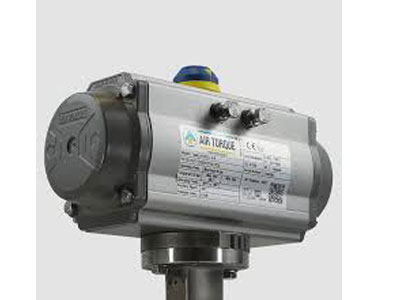What Are The Properties Of An Actuator?
Key Takeaway
Actuators have key properties that determine their performance in converting energy into motion. The main characteristics include accuracy, which ensures precise positioning, and reliability, which guarantees consistent operation over time. Efficiency is also crucial, as it measures how effectively input energy is converted into mechanical motion with minimal losses.
Other important properties include response time, or how quickly an actuator reacts, and repeatability, which ensures the same performance during repeated operations. Factors like speed, force, energy efficiency, and material durability also impact their performance. For example, pneumatic actuators are fast but offer moderate precision, while piezo actuators excel in applications requiring minimal abrasion. These properties guide actuator selection based on the task and operating conditions, ensuring optimal functionality in various systems.
Mechanical Properties of Actuators
The mechanical properties of an actuator determine its ability to deliver motion with accuracy and consistency. These include force, torque, and stroke length, which vary depending on the type and application of the actuator.
Actuators designed for linear motion, such as hydraulic cylinders, generate straight-line force, while rotary actuators deliver torque for rotational movement. The choice of actuator depends on the mechanical demands of the application. For example, heavy-duty lifting requires actuators with high force capabilities, while precision tasks in robotics need actuators with controlled and repeatable movements.
Load capacity is another crucial mechanical property. An actuator must handle the weight or resistance imposed by the system without compromising performance. Engineers must consider factors such as backlash, rigidity, and the ability to maintain motion accuracy under varying loads.
Mechanical properties are the foundation of an actuator’s functionality, ensuring it meets the operational demands of the system.

Energy Efficiency and Power Consumption
Energy efficiency is a key property of actuators, especially in industries striving to reduce operational costs and environmental impact. Different types of actuators—electric, hydraulic, and pneumatic—have varying energy requirements.
Electric actuators are often the most energy-efficient, offering precise control with minimal power usage. They are ideal for applications where precision and low energy consumption are priorities. On the other hand, hydraulic actuators, while powerful, may experience energy losses due to fluid friction and require robust systems to maintain efficiency. Pneumatic actuators, known for their speed, rely on continuous air compression, which can lead to higher energy consumption if not optimized.
Power consumption is directly linked to the actuator’s performance. Systems with high energy efficiency not only lower operational costs but also reduce the carbon footprint, aligning with sustainability goals.
For engineers, understanding the energy dynamics of actuators helps in selecting systems that balance performance with cost-effectiveness.
Responsiveness and Speed of Operation
The responsiveness and speed of an actuator are critical properties that influence how quickly and accurately a system can perform its intended tasks. This is especially important in automation and robotics, where precision and timing are paramount.
Pneumatic actuators are known for their rapid response times, making them ideal for high-speed applications like packaging and material handling. Hydraulic actuators, while slightly slower, provide smooth and powerful motion, suitable for tasks requiring steady force. Electric actuators strike a balance, offering both speed and precision, which is essential for tasks like fine positioning in robotics.
Responsiveness is also affected by the control system. Advanced actuators often include sensors and feedback mechanisms that allow real-time adjustments, enhancing their performance in dynamic environments.
For engineers, ensuring the actuator’s speed aligns with the system’s requirements is vital to achieving optimal performance and minimizing downtime.
Durability and Maintenance Requirements
The durability of an actuator determines its longevity and ability to perform reliably under various operating conditions. This property is especially crucial in industries where actuators face high loads, extreme temperatures, or corrosive environments.
Hydraulic actuators are renowned for their durability and ability to handle heavy-duty tasks, but they require regular maintenance to prevent fluid leaks and contamination. Pneumatic actuators, being simpler in design, are easier to maintain and perform well in harsh environments. Electric actuators, while durable, need protection from moisture and dust to avoid electrical failures.
Maintenance requirements depend on the operating environment and the frequency of use. Actuators in industrial applications often require routine inspections, lubrication, and part replacements to ensure consistent performance. Engineers must consider these factors to minimize downtime and extend the actuator’s lifespan.
Durability and maintenance are critical for ensuring reliability, especially in applications where failure could disrupt entire operations.
Environmental Compatibility and Safety Features
An actuator’s compatibility with its operating environment and its safety features are key properties that determine its effectiveness and reliability in specific applications.
For hazardous environments, such as chemical plants or mining sites, actuators must be designed to withstand extreme conditions, including high pressure, temperature, or corrosive substances. Pneumatic actuators are often preferred in these scenarios due to their lightweight and spark-free operation. Hydraulic actuators, with their robust construction, excel in environments requiring high force and durability.
Safety features like overload protection, emergency stop mechanisms, and fail-safe designs are essential for preventing accidents and ensuring system integrity. Electric actuators often include advanced safety controls, such as sensors and automatic shutoff systems, providing an added layer of security.
Engineers must ensure that the actuator not only performs its intended function but also adheres to safety and environmental standards, particularly in critical applications where failure is not an option.
Conclusion
The properties of actuators—ranging from mechanical features and energy efficiency to durability and environmental compatibility—are fundamental to their performance and reliability. These properties determine how well an actuator meets the demands of various industrial and automation applications.
For engineers, understanding these properties is crucial for selecting the right actuator, ensuring that it enhances efficiency, precision, and safety while minimizing costs and maintenance efforts. Actuators are not just components; they are essential tools driving innovation and progress in modern technology.
